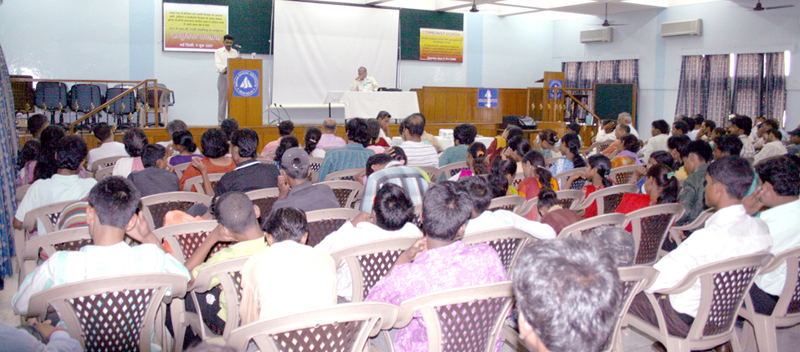
Archive 2009
|
June 16-30, 2007
Communist School organised on the occasion of the 150 th anniversary of the Great Ghadar of 1857 The Central Committee of the CGPI organised a Communist School on June 9 on the subject of the Great Ghadar of 1857. In the year which marks 150 years since the Great Ghadar, all kinds of theories and interpretations about it have been spawned to suit different agendas. The Party organised this school to enable the communists to draw appropriate lessons from the experience of the Ghadar to serve the cause of the ongoing struggle of the working class and peasantry to overthrow capitalism and build the new socialist society. The communist school drew together communists and other activists in an atmosphere of great seriousness of purpose, discipline and unity. There were worker activists, activists of peasant organisations, intellectuals, women and youth. Young people, eager to learn about the great struggles of our forefathers and about how to carry forward the struggle today, were present in large numbers. Com. Prakash Rao welcomed all those present and explained the purpose and functioning of the communist school. After that the speech of the General Secretary of the CGPI, Com. Lal Singh, set the tone for the entire proceedings. Com. Lal Singh explained that 1857 was not an isolated event, but part of the valiant and continuous resistance offered by peasants, artisans, tribal people, and other patriotic strata in all parts of our country to the rule of the foreign aggressors. All the evidence shows signs of an organised political movement with a clear political aim. The aim of the upsurge was to end colonial rule and open a new chapter in the history of our land. It was this that captured the hearts and minds of the peoples in this subcontinent. Com. Lal Singh made the important point that the colonialists not only slaughtered over a crore Indians while crushing the Ghadar , they also carried out a cultural genocide. They asserted that Indians are unfit to rule themselves, and need English educated men of property to rule over them. It is absolutely necessary to defend and develop Indian theory that will guide our struggle today to get rid of exploitation and subjugation of the working people. Without the destruction of the old order, the new cannot take shape. The Communist School is an essential part of the work of nurturing the force that can and must lead the great Ghadar of the 21st century. The speech of Com. Lal Singh was followed by a well researched presentation that substantiated the main points made in it. The presentation brought out the continuing struggle of all sections of the Indian people from all regions of Hindostan against colonial rule, from the very moment the colonialists tried to occupy our motherland right through until 1947. It analysed the strategies adopted by the British colonialists to maintain their rule in India, particularly after the shock they received from the events of 1857. It brought out with facts how the great advances made by Indians in fields of science, technology, arts, culture, philosophy and political theory were deliberately rubbished by the colonialists and India was converted into a beggar even for thought material. Finally, it clarified the nature of the transfer of power in 1947 from the colonialists to those representatives whom they had groomed from the Indian bourgeoisie, giving numerous examples of the colonial legacy that still prevails in India today. The General Secretary's speech and the presentations gave rise to an extremely lively discussion. A large number of participants got up not only to ask questions but also to put forward their views on various matters pertaining to the struggle of our people in the past and today. The enthusiasm of the youth was very obvious. Some of them said that they had never paid attention to lessons in history before because it seemed to have no relevance to the life and struggle of the working people, but that this communist school had opened their eyes. Searching questions were asked about why the people of India were unable to take power into their own hands in 1947, and about what needed to be done to get rid of the colonial legacy today. While explaining many of the points raised, Com. Lal Singh also said that it is up to all of us to go back and study and find answers to these and other questions. He stressed that we should not fall into the colonial mentality of rejecting everything from our past as backward. We should learn fully about our heritage theories and concepts, understand them in their context, and bring forward those elements that would serve the cause of revolution and social progress today. The delegations from different parts of India who had come to participate in the School were taken on a guided trip of Delhi the next day. After this, there was a lively summing up meeting, followed by dinner. During this discussion, many comrades pointed out that they were able to see the historical sites of Delhi with a new eye, as a result of the school on the Ghadar. Each of these historical monuments brought alive the life and struggles of that time. A second point that was made very forcefully was that a high level of technological skill in architecture existed in pre-colonial India, giving the lie to the colonialist propaganda that India was backward. The Ghadar continues, they remarked, to smash the legacy of colonialism and open the door to the prosperity of all our people and our rich civilization. |

